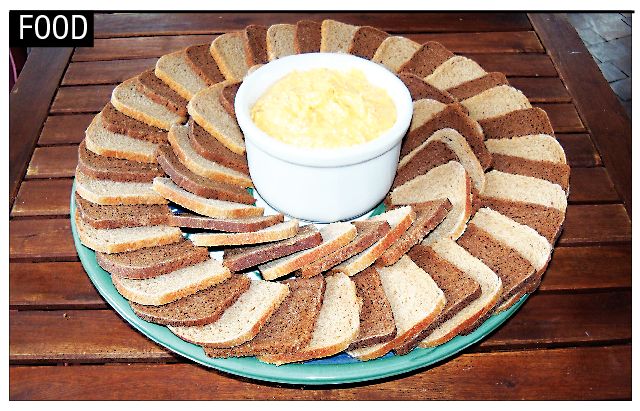
Can’t get enough pimento cheese!
REALCUISINE | Julianne Glatz
Northerners have eaten it for years, too. But American Southerners eat more, and, moreover, celebrate and claim it as their own. It’s one of the iconic foods that defines the region, right up there with fried chicken, biscuits, grits, collard greens and red-eye gravy.
Pimento cheese. Originating down South sometime in the early 1900s, it’s a simple preparation – the essential ingredients are just cheese, pimentos (or other red peppers), and mayonnaise. Still, it’s one of those things that has as many variations as there are people who make it. Some folks add pickles, onions, garlic, spices or even other cheeses besides the original Cheddar. Manufactured versions have long been available – some with 30 or more ingredients such as “American cheese imitation” and high fructose corn syrup. But all those extra ingredients can’t come close to matching the flavor and personality of homemade versions.
I remember my grandmother making pimento cheese. She’d put Cheddar chunks and raw sweet red peppers through the meat grinder clamped onto her kitchen table. First the cheese dropped into the waiting bowl, then the peppers and their juices fell on top, staining the cheese in rivulets of red. She’d add just enough mayonnaise to bind everything together, and it was ready. But back then I wasn’t all that fond of pimento cheese. That’s probably because, although Nana usually used her homemade mayonnaise, sometimes she’d substitute Miracle Whip, which my grandfather loved but I detested (and still do – just the thought of it makes me shudder).
Lately, though, I can’t seem to get enough pimento cheese. I developed my own version and keep finding more and more ways to use it. Traditionally it’s made into sandwiches (white bread with crusts trimmed for elegant affairs, of course), served on crackers, or stuffed into celery stalks. But I’ve also used it on hamburgers (highly recommended!), as a filling for omelettes, stuffed pork chops or chicken breasts, and to top scrambled eggs, baked pota toes or steamed broccoli. I’ve even hollowed out small steamed potatoes and filled them with pimento cheese for a fancy hors d’oeuvre.
In 2003, the Southern Foodways Alliance, an organization that “documents, studies and celebrates the diverse food cultures of the changing American South,” and that Atlantic Monthly’s food writer Corby Kummer called “this country’s most intellectually engaged food society” held a Pimento Cheese Invitational. Almost 300 entrants submitted recipes and stories about their pimento cheese recipe and its history. The winner, Nan Davis, wrote about her Aunt Lella’s pimento cheese sandwiches:
An indication of how closely her pimento cheese sandwiches were associated with her is the fact that her minister mentioned them in his sweet eulogy for her. He said that he didn’t know who had been making the pimento cheese sandwiches in Heaven before she got there, but they were going to have to move over now because she was going to be in charge.
Lella was famous, and I do mean famous, for her pimento cheese. While other people prepared casseroles as a preferred “funeral” food, Lella would arrive with a huge platter of delicious pimento cheese sandwiches. She just knew that everyone loved (and expected) her sandwiches. So, anyone was ill, had a death in the family, had company coming or there was a church gathering here she came with her wonderful platters of sandwiches. She made them for my parents’ fiftieth wedding anniversary, but most of them never made it out of the church kitchen; my friends helping with the celebration and family members sneaking back had pretty much devoured them before we could put them out. When a relative lost her mother, her granddaughter – then either 3 or 4 – took the sandwiches that Lella had brought to a back bedroom because she didn’t want to share them!
My favorite story about the sandwiches, however, occurred when I wanted to learn how to make them. I called Lella and asked how she made her sandwiches.
She started with “Well, first you make the mayonnaise.” I interrupted
her and said that I was not going to make the mayonnaise, just to give
me the proportions on the cheese, pimentos, and spices. There was a long
pause and then she said, “Well, you might as well not bother.” …You
better believe that when I make these sandwiches, I make the mayonnaise!
Her recipe and others, as well as a whole lot of other fun and interesting food and folklore are available on the SFA website, www.southernfoodways.com.
Like Davis’ Aunt Lella’s, what makes my recipe special is the homemade mayonnaise, which is a variation of a recipe in New Orleans chef Paul Prudhomme’s first cookbook, Louisiana Kitchen. Jalapeno
peppers and scallions (a.k.a. green onions) make it exceptionally
flavorful. Incidentally, even hot jalapenos make the mayonnaise (and the
pimento cheese) only very mildly spicy, but you can substitute widely
available mild jalapenos if you want the flavor without any heat. I also
like using roasted red peppers – either fresh or bottled – which are
more flavorful than conventional bottled pimentos.
Contact Julianne Glatz at [email protected].